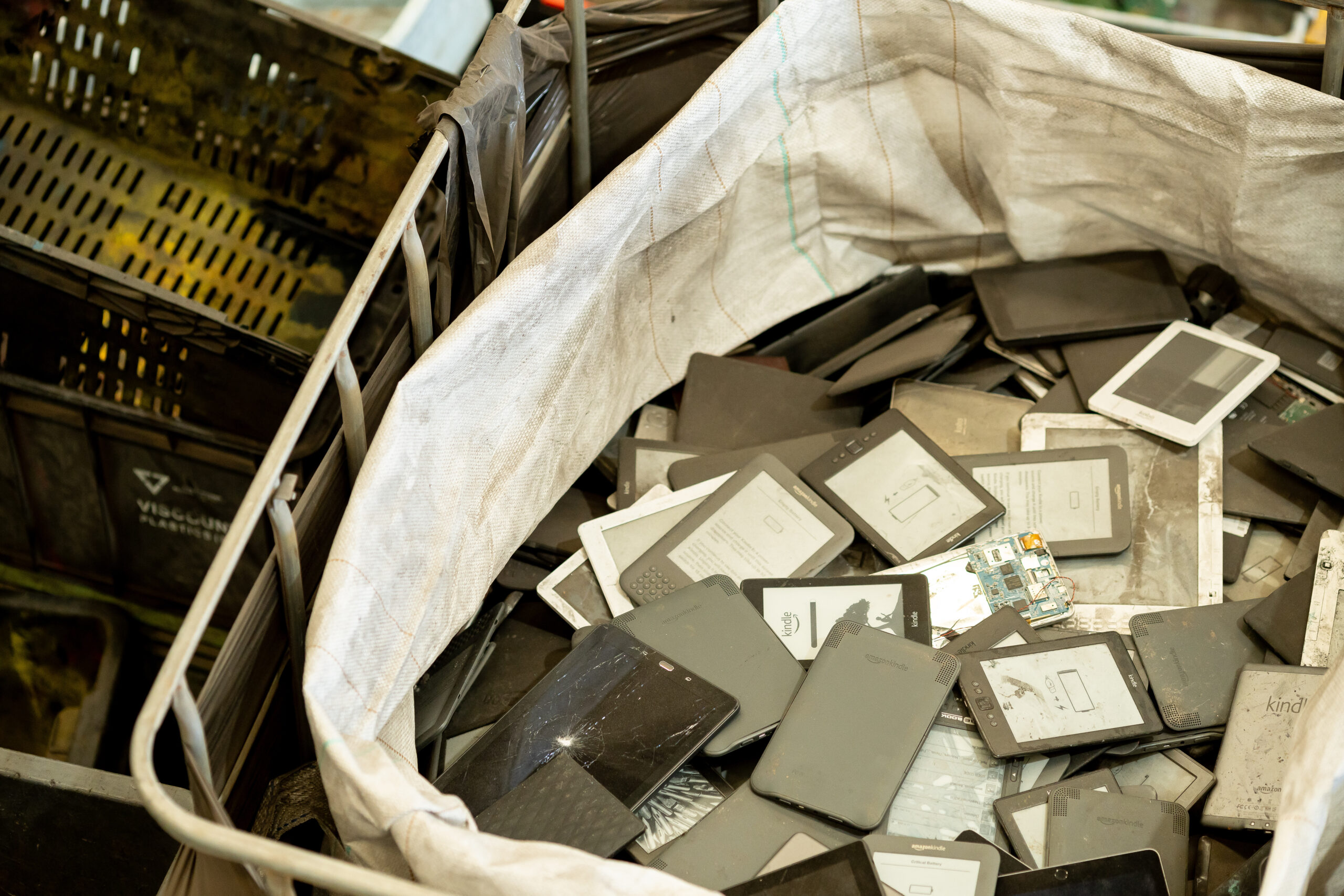Total Green Recycling
Safe, secure & compliant
e-waste recycling
From secure data destruction to sustainable e-waste recycling, Total Green Recycling ensures your old technology is transformed, rather than trashed.

For councils
Simplify e-waste management with Total Green Recycling’s fully compliant solutions. From secure collection bins to reporting, we help councils meet regulations and serve their communities.

For businesses:
Ensure secure, compliant recycling of your business's e-waste. Shred your hard drives, and meet industry regulations with Total Green Recycling’s efficient e-recycling solutions.

For individuals
Dispose of your old electronics responsibly at our easy-to-access drop-off locations. Protect the environment with Total Green Recycling’s hassle-free, safe e-waste management.

"It is a priviliege to be associated with the fine folks at Total Recycling Group. Very friendly and professional here. And doing a noble cause!"
-Miklos Koncsek
We are Total Green Recycling
Transforming the way e-waste is recycled
E-waste is fast becoming one of WA’s biggest challenges, especially with the introduction of the 2024 WA landfill ban. The constant push for newer devices—phones, laptops, and tech—is fueling an ever-growing mountain of discarded electronics.
Unfortunately, many of these old devices are thrown away improperly, adding to environmental hazards and safety risks.
The need for responsible e-waste recycling has never been greater.
Total Green Recycling is leading the charge in secure e-waste management. From councils to businesses, our community-driven solutions ensure the compliant recycling of your e-waste while also, driving meaningful environmental change.
Together, we can transform e-waste into opportunities for a cleaner tomorrow.
What is e-waste?
Time to take control of e-waste in Western Australia
In Australia alone, millions of tons of e-waste are produced each year, with only a fraction of this being recycled. Left unmanaged, this waste occupies valuable space and leaches harmful substances into the environment.
We specialise in comprehensive e-waste solutions that put safety, compliance and sustainability first. Our cutting-edge processes ensure every step is optimised—ensuring responsible recycling of electronics.

Electronic devices:
- Laptops & Computers
- Mobile Phones & iPods
- LCD/Plasma Televisions & Monitors
- Printers, Scanners, & Fax Machines
- Photocopiers & Plotters
- DVD/VCR/CD Players
- Hi-Fi Systems & UPS Systems

Components and accessories:
- Hard Disks, USB Drives, & Circuit Boards
- Computer Server Units & Network Hubs
- Electronic Cables & Wiring
- Keyboards, Mice, & Joysticks
- Batteries (varied chemistries)

Specialised items:
- Smoke alarms
- Ink & toner not with its associated printer
- Fluorescent globes
The Total Green Recycling process
Efficient, secure and compliant e-waste solutions for councils and businesses
Whether you’re a local council looking for drop-off solutions or a business managing IT recycling, we have the right system in place—from bins to sea containers—to make collection seamless. For individuals, we offer convenient drop-off points across WA.
Efficient, secure and compliant e-waste solutions for councils and businesses
Whether you’re a local council looking for drop-off solutions or a business managing IT recycling, we have the right system in place—from bins to sea containers—to make collection seamless. For individuals, we offer convenient drop-off points across WA.
Secure transport and handling
Our team ensures safe and compliant transport of your e-waste from your site to our processing facility. We use certified, reliable methods to safeguard the environment during transport.

Responsible recycling and recovery
The final step involves recycling recovered materials. We turn old electronics into valuable resources, reducing environmental impact and contributing to a circular economy.
Comprehensive e-waste processing
Once collected, your e-waste is sorted and processed using state-of-the-art technology. Our advanced facility ensures maximum efficiency, recovering valuable materials and minimising waste sent to landfills.
What our clients are saying
Our clients trust us to provide safe, compliant, and efficient e-waste management solutions, and their satisfaction speaks volumes about the quality of our services.
-
This company is doing the world a big favour. More companies should care about the environment as much as the team at Total Green Recycling. Keep up the great work!

Greg Allan
November 24, 2020Doing the hard yards to recycle electronics waste

Matt Olson
November 24, 2023Saving the Environment!. Took care of all my unwanted electronic waste brilliant work!

Ed Pham
November 24, 2017 -
We do quite a bit of IT / Comms recycling and we have never seen such a professional job as the recent one done for us by Total Green. ... read more Amazing reports / detail - check these guys out - you won't be sorry.

Tony Peake
November 24, 2017Amazing at recycling

A
November 24, 2018Professional and accommodating

EIT IDC
November 24, 2019 -
An amazing company that is doing wonders for WA and E-Waste. I was given the privilege of interning with Total Green Recycling and I without a doubt recommend them for... read more all your E-waste needs.

Ethan Gosselink
November 24, 2019Great e-waste recycling company lead and owned by two Aussie bloke brothers who care greatly about doing the right thing for the community and our environment. Unlike other recyclers they... read more are very transparent about what they do. You can check them on Social Media and see for yourself. Highly recommend!

Sharka
November 24, 2019What a great company. And what a great commitment to the environment. e-Waste is a huge issue globally and this company is doing their bit to reduce the impact that... read more our IT assets have. And, very cost effectively too. Even if you are a small one-person business, or just don't want anything that is on your old defunct laptop retrieved by a cyber criminal, you can afford this option. They provide a uniquely identified digital certificate for each server/laptop etc decommissioned so you and your clients can rest assured that any data left on these devices is truly destroyed. Give them a call. They are on the WA Governments panel of providers list as well.

Alexis Nguyen
November 24, 2019






Do you have a question?
Don't hesitate to ask us
Our team is here to help with all your e-waste requirements, and we have answered your commonly asked.
What is e-waste?
E-waste, or electronic waste, refers to discarded electronic devices and equipment, including everything from old computers and phones to TVs and household appliances. It encompasses any item with an electrical plug, battery, or circuit board that is no longer in use or has reached the end of its life.
Why the upsurge in e-waste?
Rapid technological advancements and the increasing consumer demand for new devices largely drive the rise in e-waste. As electronics become obsolete more quickly, people are upgrading their gadgets more frequently, leading to a growing volume of discarded items. Additionally, the culture of planned obsolescence, where devices are designed to have shorter lifespans, also contributes to the upsurge in e-waste.
What types of e-waste does Total Green Recycling accept?
We accept a wide range of e-waste items, including circuit boards, computer monitors, servers, laptops, mobile phones, televisions and more. Some items, such as air conditioners and fridges, require prior approval. For a full list of acceptable and non-acceptable items, please refer to our Acceptable Items Schedule.
How do I schedule a pickup for my e-waste?
Scheduling a pickup with Total Green Recycling is easy. Simply contact us on 08) 9258 6009 or email us on [email protected]. Our team will work with you to arrange a convenient time and ensure that your e-waste is collected safely and securely.
What does the landfill ban state?
The 2024 landfill ban in Western Australia prohibits the recycling of e-waste in landfills, requiring all electronic waste to be processed through accredited recycling facilities. The aim is to reduce the environmental impact of hazardous materials found in electronics and to recover valuable materials through proper recycling methods. This ban is part of a broader push toward sustainable waste management in the state.
What happens to my data when I recycle electronics?
At Total Green Recycling, we ensure the complete and secure destruction of various devices by shredding hard drives. Each hard drive goes through our entire shredding process, including the secondary shredder and hammer mill, which guarantees the device is fully destroyed and data is irretrievable, providing total security and peace of mind.
Are there any charges for recycling non-scheme items?
Yes, certain non-scheme items such as microwaves, dishwashers, and Hi-Fi systems may incur additional charges. It’s important to check the Acceptable Items Schedule for a breakdown of these items. Our team is happy to provide more information when you schedule your e-waste drop-off or collection.
Where can I drop off my e-waste if I’m an individual?
You can view our various drop-off locations here.
Take control of your e-waste
Partner with Total Green Recycling to responsibly manage your e-waste, protect your data and contribute to a safer environment. Get in touch with us.

